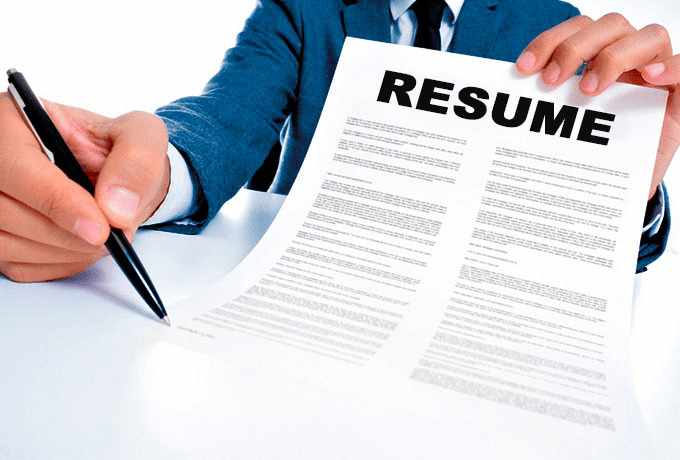
When it comes to job hunting, Your CV is often your first chance to make an impression on your employer
This guide will show you how to write a great CV that’s ready for 2019 and beyond.
What is a CV?
Your CV, short for curriculum vitae, is a personal marketing document used to sell yourself to prospective employers. It should tell them about you, your professional history and your skills, abilities and achievements. Ultimately, it should highlight why you’re the best person for the job. A CV is required when applying for a job. In addition to your CV, employers may also require a cover letter and a completed application form.
What to include in your CV in 2019?
While the structure of a CV is flexible, bending to your unique skill set and experiences, there are particular sections that employers expect to see on your CV regardless.Here are the sections you must include in your CV:Name, professional title and contact detailsThe first part of your CV, positioned at the top of the page, should contain your name, professional title and contact details. Under no circumstances should you title your CV with ‘curriculum vitae’ or ‘CV’ as it’s a waste of valuable space. Treat your name as the title instead.When it comes to your contact details, your email address and phone number(s) are essential. Once upon a time, it was customary to include your full address on your CV. Today, you simply need to list your town and county.If you like, you can also include a link to your LinkedIn profile in this section
How long should my CV be?
As you progress in your career you will most likely find your CV growing as you gain more experience. However, you should also consider whether you can omit some information regarding your early work history as this happens. Generally, keeping you CV to no more than four sides of A4 is a good rule of thumb. “Providing a full employment history is important, as employers will be likely to ask about any significant gaps,” Sally Martin added. “However, once you have been progressing in your career for some time it may be best to remove some of the details of your earliest jobs and focus on your most recent and impressive achievements,”
How much personal information should I include?
Including some personal information such as hobbies and interests is fine, but do so sparingly. Remember that the employer is looking for an overview of your skills so think about what is relevant. “Consider how your hobbies and interests have equipped you with skills that are relevant to the job you are applying for. By presenting personal information in this way you can increase your appeal to an employer
Should I put my photo on my CV?
While it is becoming popular among some professionals to include a personal photo on their CV, many employers will be put off by it. “Including a personal photo may do more harm than good, as some employers may consider it unprofessional. A better option is to include a professional looking photo on your LinkedIn profile,” Sally Martin advised. “Many employers will check your professional social media presence as part of the recruitment process and this is a more appropriate place to have a headshot.”
Personal profile A personal profile?
Personal profile also known as a personal statement, career objective and professional profile, is one of the most important aspects of your CV. It’s a short paragraph that sits just underneath your name and contact details giving prospective employers an overview of who you are and what you’re all about. You should tailor your profile to every job you apply for, highlighting specific qualities that match you to the role. Aim to keep your personal statement short and sweet, and no longer than a few sentences. To make the most of this section, you should try to address the following: 1.Who are you? 2.What can you offer the company? 3.What are your career goals?
Should I put my work email address on my CV?
You should avoid using your work contact details when applying for other positions unless you have clarified this with your current employer. If you are going to set up a hotmail address or something similar, be sure it is an appropriate address and avoid using nicknames as this could give a negative impression to a future employer.
Experience and employment history?
Your employment history section gives you a chance to outline your previous jobs, internships and work experience. List your experience in reverse chronological order as your recent role is the most relevant to the employer. When listing each position of employment, state your job title, the employer, the dates you worked and a line that summarises the role. Then bullet point your key responsibilities, skills and achievements, and bolster each point
Education and qualifications ?
Like your experience section, your education should be listed in reverse chronological order. Include the name of the institutions and the dates you were there, followed by the qualifications and grades you achieved.
Should I include a cover letter?
Cover letters are only useful if they are specifically tailored to the role. A generic letter may seem convenient, but by using one you may be giving the impression that you haven’t put in any effort. If you decide to include a cover letter, use it to clearly outline where your skills and experience match those required in the role and ensure that it is correctly addressed.

Usually, I never comment on blogs but your article is so convincing that I never stop myself to say something about it. You’re doing a great job. Keep it up. Thanks for sharing a knowledgeable article. It takes a lot of time to write such a useful article. Keep it up.